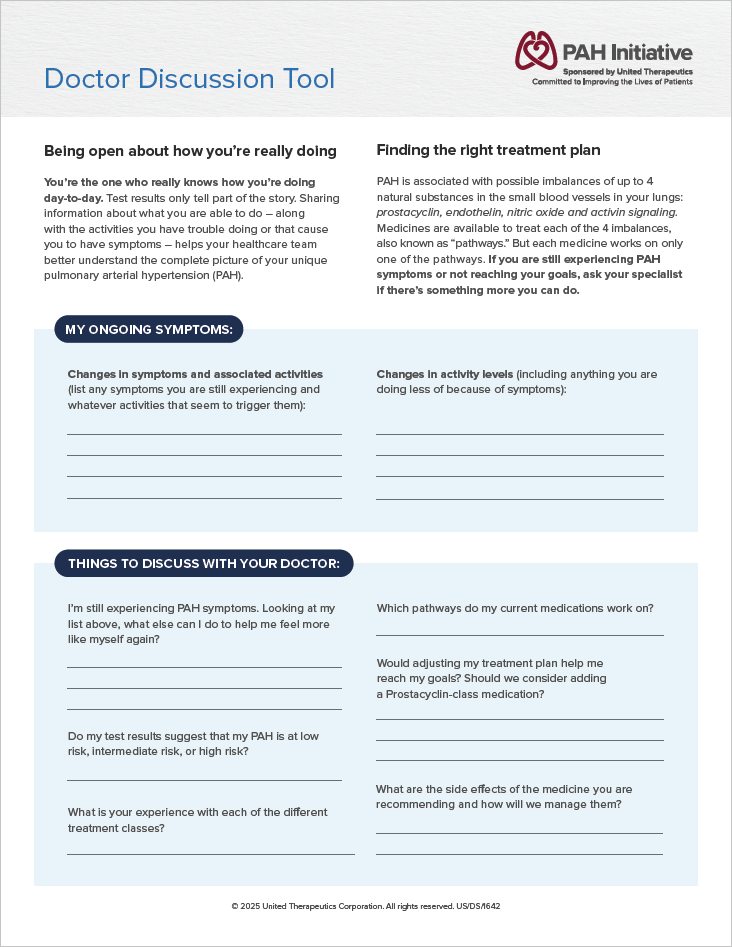For more educational materials in Spanish, visit our Spanish language Learning Library page.
Para más materiales educativos en español, visite nuestra página de Biblioteca de Aprendizaje.
English-language videos

Download this sheet to make it easy to track your symptoms. Knowing your symptoms can help your healthcare provider determine which treatments are right for you.
Download
This 5-question form can help you plan and initiate focused conversations with your healthcare provider.
Download
Use this discussion guide to plan the things you’d like to discuss with your healthcare team. It addresses topics like your symptoms, test results, and treatment options.
Download
Some of the ways to relieve stress are obvious, like yoga. But music, gardening, laughter—and even chewing gum—can help you relax and ease your stress.
Download
This 1-page guide provides websites full of recipes and tips that can help you cut back on salt. You’ll also learn to understand nutrition labels and find suggestions for those times when you’re dining at a restaurant or with friends.
Download
Get more flavor in your diet with nutritious smoothies. These 8 smoothie recipes offer flavors like peanut butter banana, cherry chocolate, and key lime pie.
DownloadSign up to receive updates from United Therapeutics and the PAH Initiative.
Sign Up